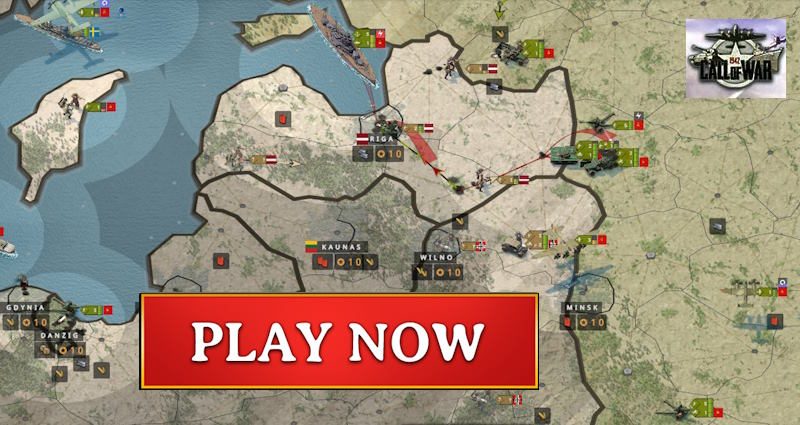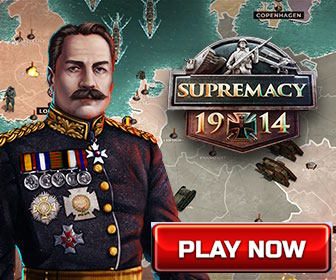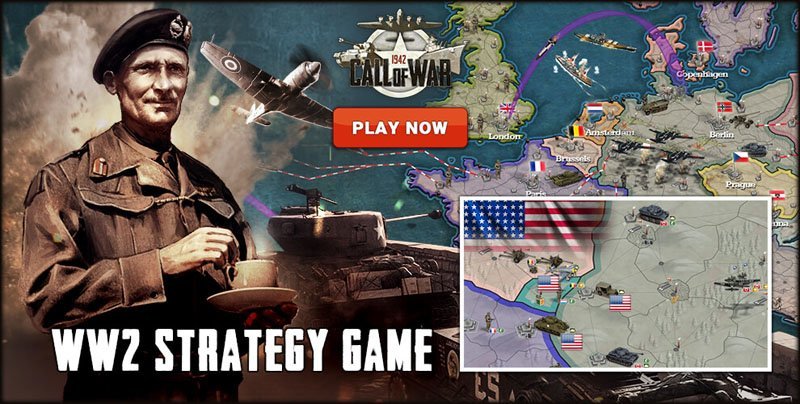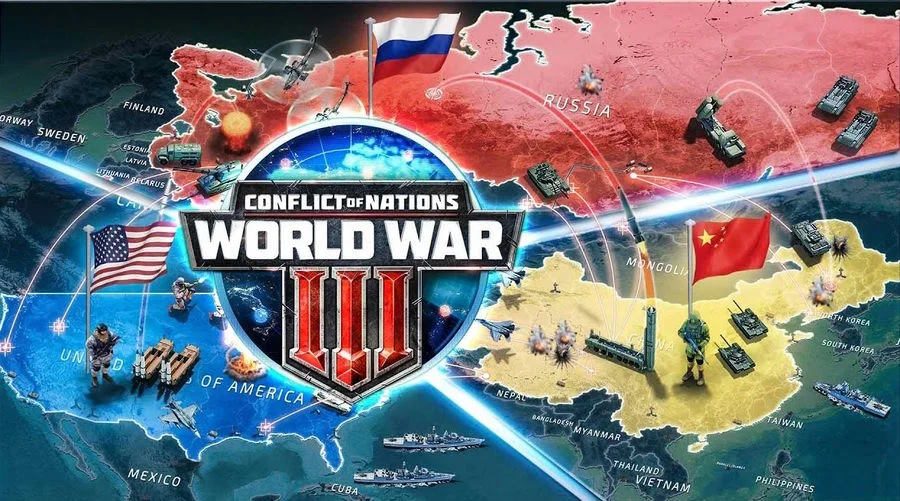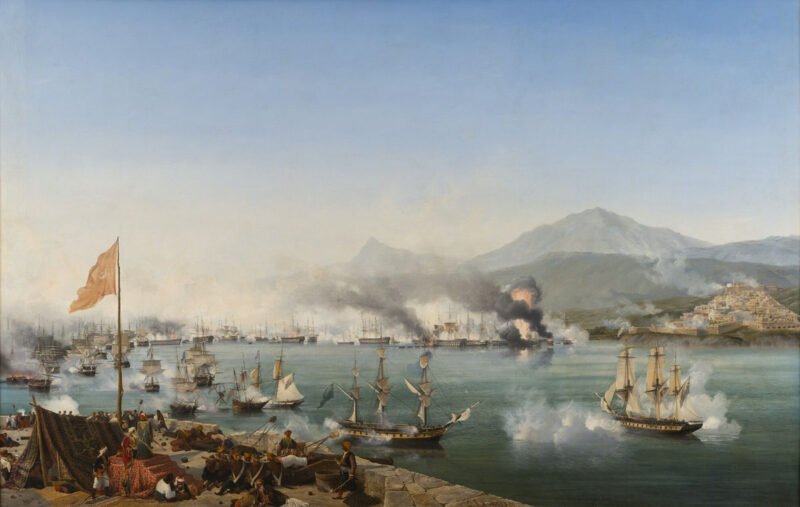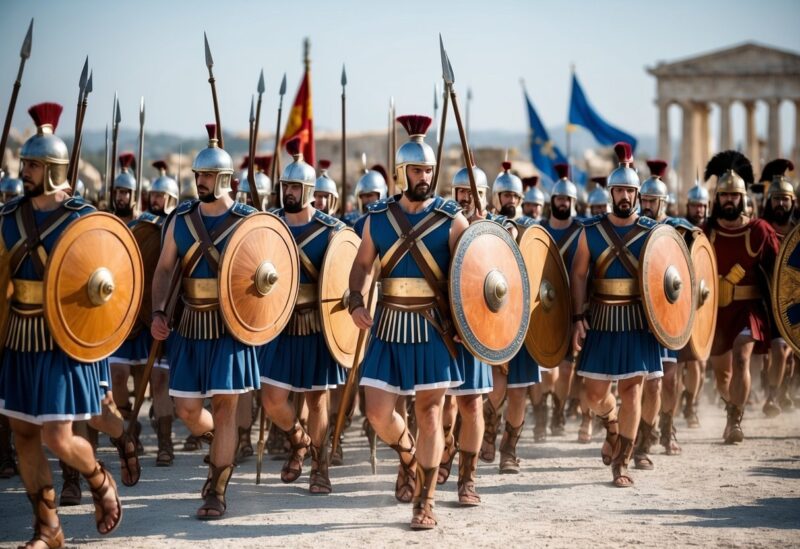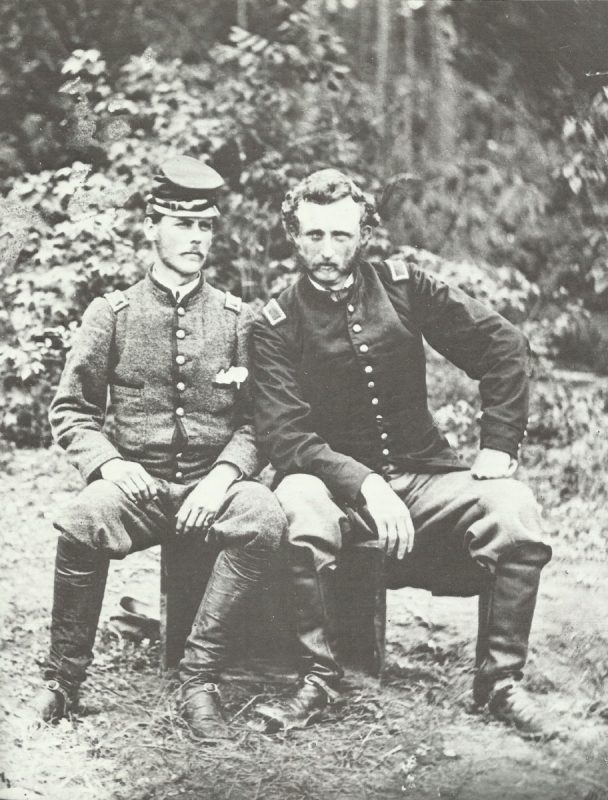Late Roman Army from Hadrian to Constantine: Evolution of Imperial Defense.
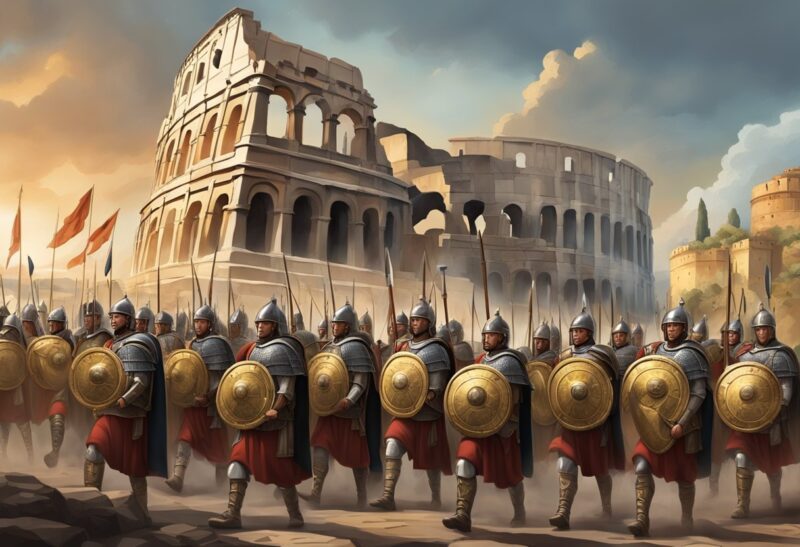
Late Roman Army from Hadrian to Constantine
Table of Contents
The Late Roman Army from Hadrian to Constantine was a formidable fighting force that protected the vast Roman Empire. This period saw major changes in military structure and tactics. The army evolved from a conquering force over Hadrian’s defensive stance to Constantine’s more mobile forces, adapting to new threats and challenges.
Hadrian, who ruled from 117-138 AD, took a defensive approach. He built a wall to separate Romans from barbarians. This wall became a symbol of Roman power and engineering skill. The army during this time focused on border defense and maintaining order within the empire.
By the time of Constantine, who ruled from 306-337 AD, the army had changed. It faced new threats and needed to be more flexible. Constantine created a mobile field army that could respond quickly to threats. He also made changes to army leadership and structure. These changes helped the Roman Empire survive for centuries more in the east.
Historical Context
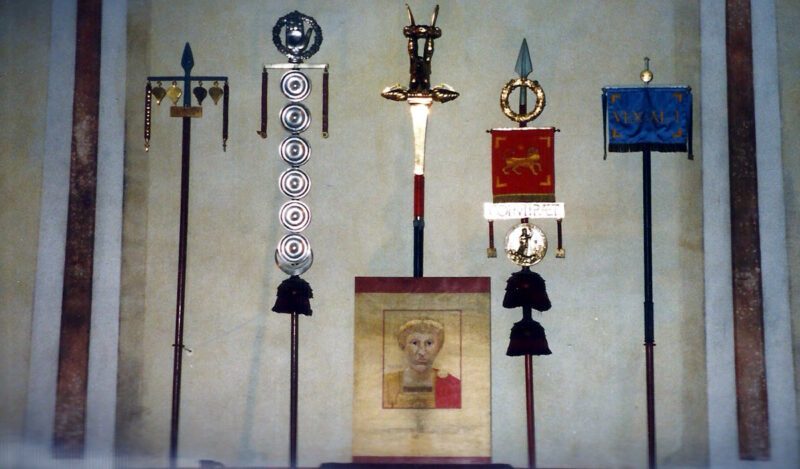
The Late Roman Army underwent significant changes from Hadrian to Constantine. New challenges and reforms reshaped the military during this period. Imperial politics also played a key role in the army’s evolution.
The Era of Hadrian
Hadrian, who ruled from 117 to 138 CE, focused on strengthening Roman borders. He built the famous Hadrian’s Wall in Britain to mark the empire’s northern limit.
Hadrian changed military tactics from expansion to defense. He improved training and discipline in the army. The emperor also standardized weapons and armor across the legions.
Hadrian spent much time visiting frontier zones. He personally inspected troops and fortifications. This hands-on approach boosted morale and readiness.
Changes and Reforms under Diocletian and Constantine
Diocletian, ruling from 284 to 305 CE, split the empire into four parts. This system, called the Tetrarchy, aimed to improve control and defense.
He increased the size of the army and created mobile field units. These units could respond quickly to threats across the empire.
Constantine continued many of Diocletian’s reforms after 306 CE. He further expanded the mobile field army. Constantine also improved cavalry units, making them a key part of the military.
Both emperors raised taxes to pay for the larger army. They also recruited more non-Romans into the ranks.
Imperial Politics and the Army’s Role
The army played a crucial role in imperial politics during this time. Soldiers often decided who became emperor.
Military leaders gained more power and influence. Many became emperors themselves, like Diocletian.
The army fought in several civil wars. These conflicts weakened the empire’s defenses against outside threats.
Emperors relied on the army for survival. They gave soldiers more benefits and higher pay. This increased the cost of maintaining the military.
Composition and Structure
The Late Roman Army underwent significant changes in its makeup and organization from Hadrian to Constantine. These changes affected the army’s overall structure, infantry and cavalry units, and support forces.
Overall Organisation of the Army
The army split into two main branches: the comitatenses and limitanei. Comitatenses were mobile field armies that could respond to threats across the empire. Limitanei guarded the borders and frontiers.
The emperor commanded the army through a complex chain of officers. At the top were the magistri militum, who led large military regions.
Under them were duces, who commanded frontier provinces. Comites led field armies within specific regions.
This structure allowed for flexibility in responding to threats while maintaining a strong border defense.
Legions and Infantry Units
Legions remained the backbone of the Roman army, but their size and composition changed. They became smaller, typically 1,000-1,500 men instead of the earlier 5,000.
New types of infantry units emerged:
- Auxilia palatina: elite infantry regiments
- Legio comitatenses: mobile legions
- Legio pseudocomitatenses: former limitanei upgraded to field army status
Infantry tactics evolved to favor more flexible formations. Soldiers used a mix of weapons including spears, swords, and missile weapons.
Cavalry: Clibanarii and Cataphracti
Cavalry grew in importance during this period. Two elite types stood out:
- Clibanarii: heavily armored cavalry armed with long lances
- Cataphracti: similar to clibanarii but with additional horse armor
These units could break enemy formations with powerful charges. Regular cavalry units also existed, providing speed and mobility to Roman forces.
The Scholae Palatinae served as the emperor’s elite mounted bodyguard.
Auxiliary Forces and Other Support Units
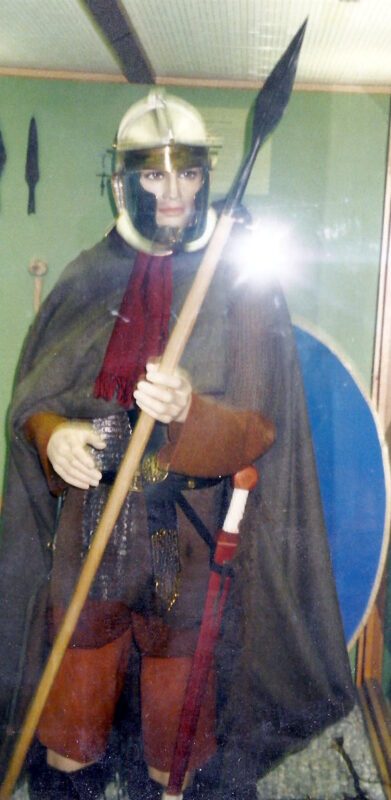
Auxiliary forces played a crucial role in supporting the main army:
- Foederati: allied troops from outside the empire
- Numeri: specialist units often recruited from frontier tribes
- Limitanei: border troops who also engaged in farming
Support units included:
- Engineers for siege warfare and construction
- Scouts and light cavalry for reconnaissance
- Archers and slingers for ranged combat
These diverse forces allowed the Late Roman Army to adapt to various combat situations and terrain types.
Military Equipment and Tactics
The Late Roman Army’s effectiveness stemmed from its advanced equipment and innovative tactics. Soldiers used a mix of traditional and new weapons, while commanders employed sophisticated strategies on the battlefield.
Arms and Armour
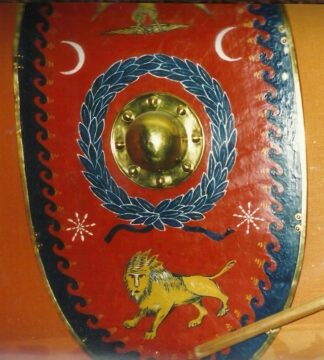
Roman soldiers carried a variety of weapons. The gladius, a short sword, remained popular for close combat. Spears and javelins were used for throwing and thrusting. Bows and slings provided ranged attacks.
Armor evolved during this period. Many troops wore the lorica segmentata, a segmented plate armor. Some used chainmail or scale armor instead. Helmets protected the head and neck.
Shields were crucial for defense. The rectangular scutum gave way to oval and round shields. These were lighter and easier to maneuver.
Artillery and Siege Engines
The Roman army employed powerful siege weapons. The ballista, a large crossbow-like device, fired heavy bolts at enemy fortifications. Onagers hurled stone projectiles to break down walls.
Battering rams helped breach gates and walls. Siege towers allowed troops to scale high defenses. These machines were often built on-site using local materials.
Mobile artillery supported field battles too. Carroballistas, mounted on carts, provided quick-moving missile support for infantry and cavalry units.
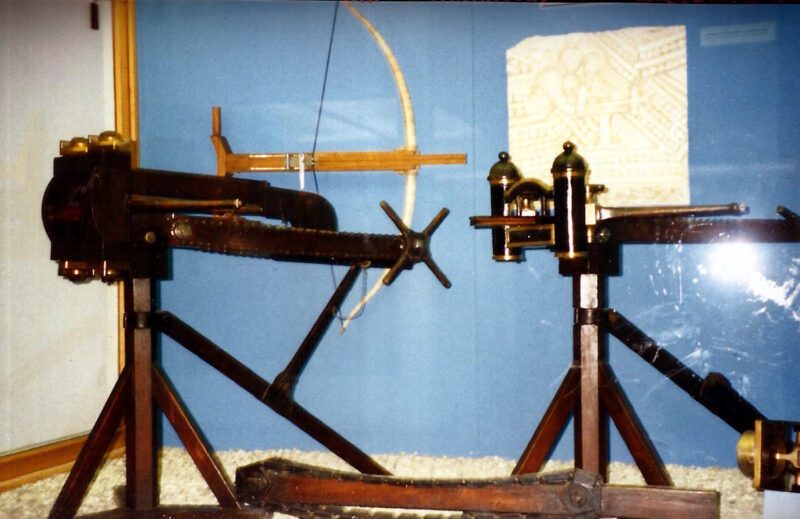
Heavily Armoured Cavalry Tactics
Cavalry played an increasing role in Late Roman warfare. Heavily armored horsemen, known as cataphracts, became a powerful shock force on the battlefield.
These riders wore full-body armor and carried long lances. They charged in tight formations to break enemy lines. Their weight and momentum could overwhelm infantry units.
Commanders used cataphracts to exploit gaps in enemy formations. They also countered rival cavalry forces effectively.
Infantry Strategies and Formations
Infantry remained the backbone of the Roman army. Soldiers fought in disciplined formations, adapting to different battlefield conditions.
The classic legionary formation evolved. Units became more flexible, able to fight in looser or tighter groups as needed. Interlocking shields still provided strong defense.
Archers and skirmishers supported the main battle line. They harassed enemies and disrupted formations before close combat began. Light infantry provided screening and pursued fleeing foes.
Forts, Frontiers, and the Limitanei
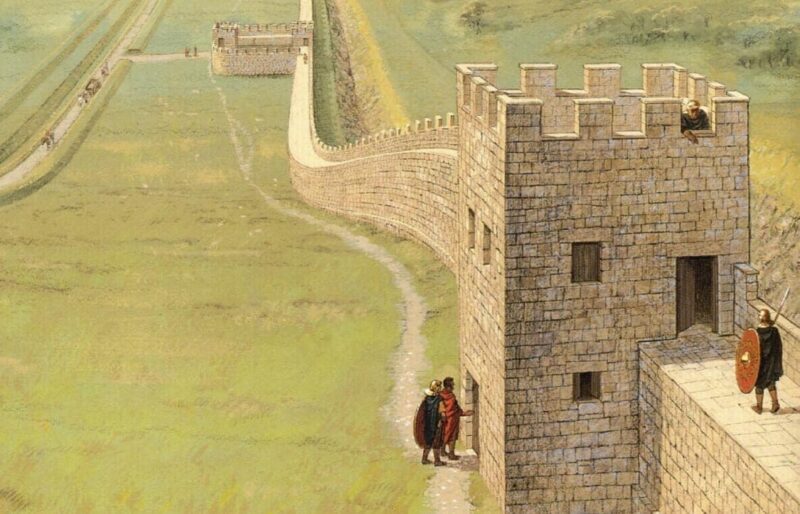
The Roman Empire’s borders were protected by a system of forts and frontier troops called limitanei. These defenses played a crucial role in guarding against external threats and maintaining stability in border regions.
Hadrian’s Wall: A Case Study
Hadrian’s Wall was a prime example of Roman frontier fortifications. Built in 122 AD, it stretched 73 miles across northern England.
The wall featured numerous forts and milecastles, housing soldiers who patrolled the border. These troops kept watch for marauding tribesmen from Scotland and other potential invaders.
Hadrian’s Wall marked the northernmost boundary of Roman Britain. It served as both a physical barrier and a symbol of Roman power in the region.
Role of Limitanei in Frontier Defense
The limitanei were specialized frontier troops tasked with guarding Roman borders. They lived in frontier forts and settlements, often with their families.
These soldiers had dual roles:
- Military defense against external threats
- Local policing and administration
Limitanei were typically recruited from local populations. This practice helped integrate border regions into the wider Roman Empire.
Logistics and Administration
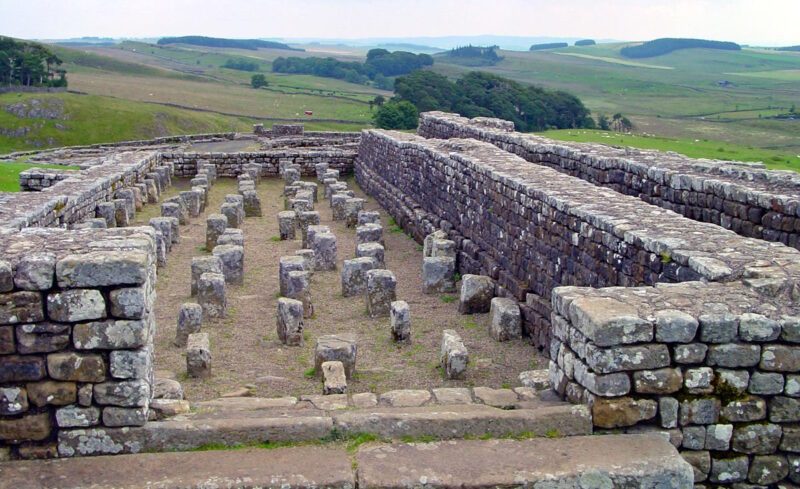
Supply Lines and Provisions
The Roman Army relied on an extensive network of supply lines to feed and equip its troops. Soldiers received daily rations of bread, meat, wine, and other essentials.
Supply depots were strategically placed along major roads and at key military bases. These warehouses stored grain, weapons, and other vital supplies.
The army used a mix of state-run transport and private contractors to move goods. River and sea routes were preferred when possible, as they were faster and more efficient than land transport.
Administrative Reforms and Military Finance
Constantine implemented significant changes to military administration. He separated civil and military powers, creating distinct career paths for each.
The army’s financial system was overhauled. Soldiers’ pay was standardized and often included both money and goods.
Tax reforms ensured a steady flow of funds to support the military. This included the introduction of new taxes specifically earmarked for army expenses.
Recruitment and Service Terms
Recruitment methods evolved over time. The army increasingly relied on volunteers rather than conscripts.
Service terms typically lasted 20-25 years. After completing their service, veterans received land grants or monetary compensation.
The army began recruiting more heavily from frontier regions and among barbarian tribes. This practice, known as barbarization, became more common in the later empire.
Hereditary service became more prevalent. Sons of soldiers were expected to follow in their fathers’ footsteps, creating military families.
Cultural and Economic Impact
The Roman army shaped society and the economy from Hadrian to Constantine. It influenced culture across the empire while creating both costs and benefits for Rome’s finances.
Army’s Influence on Roman Society
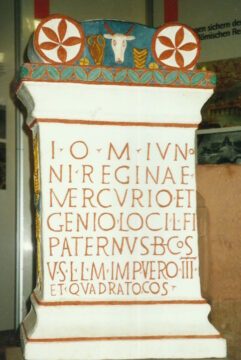
The Roman army left a deep mark on society. Soldiers brought Roman culture to far-flung parts of the empire. They built roads, bridges, and forts that changed the landscape.
Many towns grew up around military bases. These became hubs of Roman life. Soldiers mixed with locals, spreading Latin and Roman customs.
The army offered a path to citizenship for non-Romans. This helped unite the empire’s diverse peoples. Veterans often became local leaders after retiring.
Military life shaped Roman values. Discipline, duty, and hierarchy were prized. These ideals spread beyond the army into civilian society.
Economic Burden and Benefits
The army was Rome’s biggest expense. Soldiers’ pay and equipment cost huge sums. Taxes rose to fund the military.
Yet the army also boosted the economy. It created jobs and drove demand for goods. Weapons, armor, and supplies were needed in large amounts.
Military spending flowed to frontier regions. This helped develop poorer areas. Roads built for troops also helped trade.
The army guarded trade routes. This made long-distance commerce safer. Peace and stability allowed the economy to grow.
Some areas suffered from the army’s presence. Forced labor and food requisitions were common. But overall, the military was a key economic force.
Opponents and Warfare
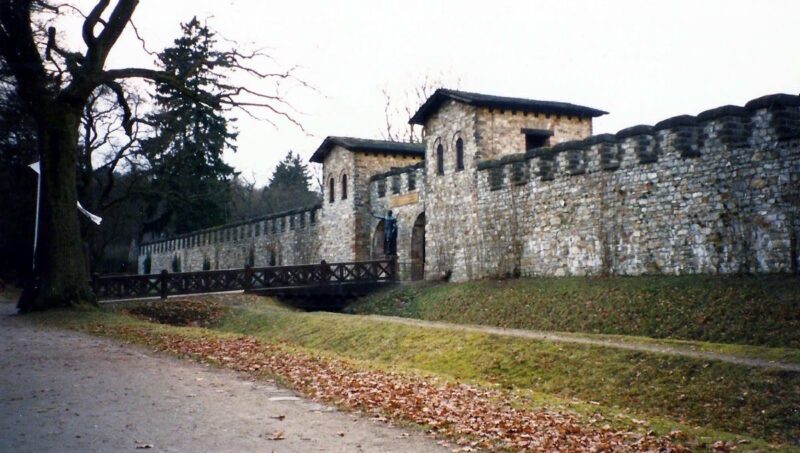
The Late Roman Army faced major challenges from barbarian invasions and engaged in significant military campaigns. Roman forces adapted their tactics and equipment to counter new threats on multiple fronts.
Barbarian Invasions and Responses
The Romans battled various barbarian groups along their borders. Germanic tribes posed a constant threat, launching raids into Roman territory. The army built fortifications like Hadrian’s Wall to defend against northern invaders.
Roman forces also clashed with Sassanid Persians in the east. To counter these threats, the army became more mobile. Cavalry units grew in importance.
The Romans recruited some barbarians as auxiliary troops. This provided manpower but risked loyalty issues. Overall, the army struggled to defend the empire’s vast frontiers against determined foes.
Major Battles and Military Campaigns
Key battles shaped the Late Roman period. The Battle of Strasbourg in 357 CE saw Julian defeat invading Alamanni forces. Roman tactics and discipline prevailed against larger barbarian numbers.
Constantine I led campaigns to reunify the empire. His victory at the Milvian Bridge in 312 CE secured his rule. He later defeated eastern rival Licinius.
The army also fought defensive wars. At Adrianople in 378 CE, Gothic cavalry crushed Roman infantry. This disaster highlighted the need for military reforms.
Campaigns aimed to push back invaders and restore order along the frontiers. Success varied as the army faced mounting pressure on multiple fronts.
Scholarship and Historiography
The study of the Late Roman Army has evolved significantly over time. Historians have examined primary sources and archaeological evidence to understand its structure, tactics, and impact.
Early Historians on the Late Roman Army
Ammianus Marcellinus stands out as a key early historian of the Late Roman Army. As a soldier himself, he provided firsthand accounts of military campaigns and organization in the 4th century.
His writings offer valuable insights into:
- Troop movements
- Battle tactics
- Army structure
Other early sources include:
- Official documents
- Military manuals
- Inscriptions
These help paint a picture of army life and operations during this period.
Modern Scholarship and Debates
Recent scholarship has brought new perspectives to the study of the Late Roman Army. Historians like Michael Simkins have examined archaeological evidence to better understand equipment and tactics.
Key areas of modern research include:
- Changes in body armor design
- Shifts in recruitment practices
- The army’s role in political changes
Debates continue over the extent of “barbarization” in the army and its impact on military effectiveness. New archaeological finds regularly add to our knowledge, prompting scholars to reassess long-held views about the Late Roman military.
Archaeological Evidence and Research
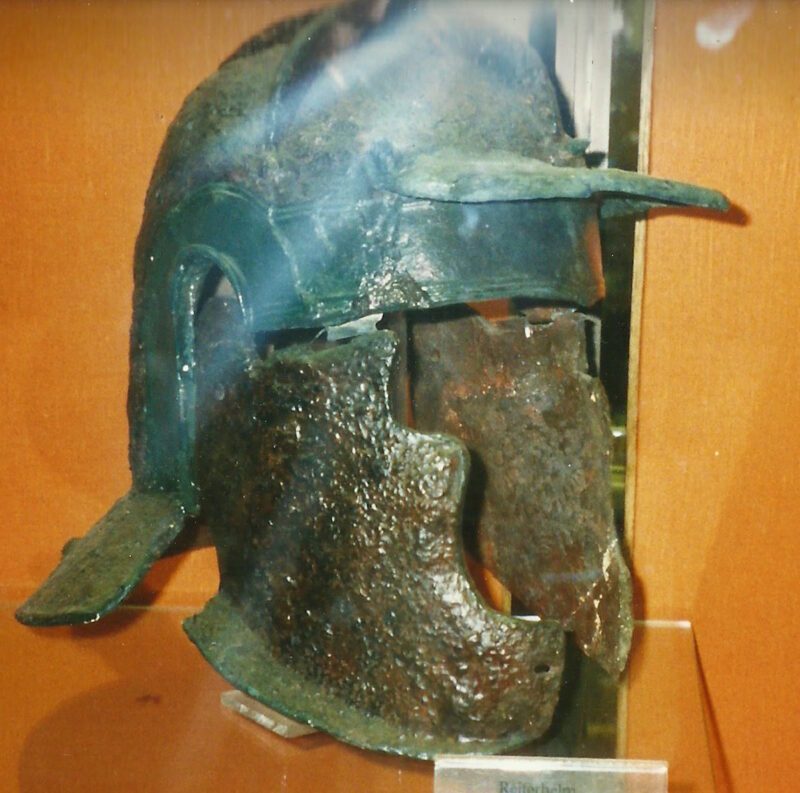
Excavations and artifact analysis provide crucial insights into the Late Roman army’s equipment, fortifications, and daily life. New technologies are enhancing our understanding of military artifacts and structures from this period.
Fortifications and Weapon Finds
Roman forts and defensive walls offer key evidence about military strategy. Hadrian’s Wall, built around AD 122, stretched 80 Roman miles across northern Britain. Its remains reveal much about frontier defense systems.
Excavated weapons show how armament evolved. Common finds include:
- Iron swords
- Spear and javelin points
- Armor fragments
- Ballista bolts
Pottery, coins, and personal items found at military sites give clues about soldiers’ daily lives and the chronology of occupations.
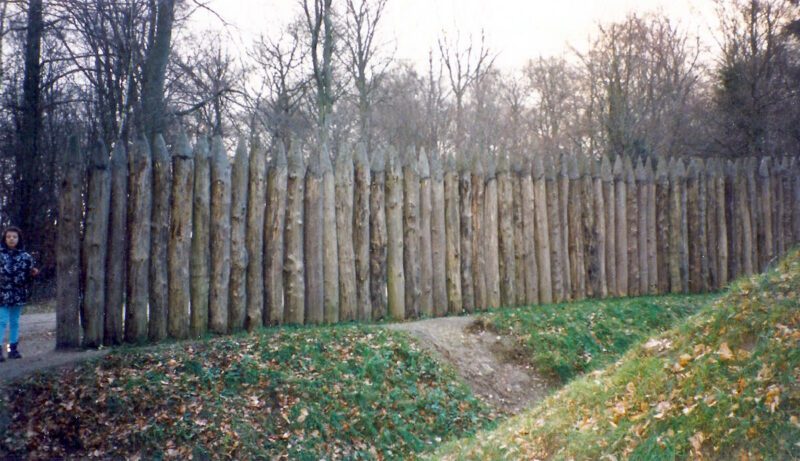
Role of Technology in Understanding Military Equipment
Advanced imaging techniques now allow researchers to examine artifacts in new ways. X-ray fluorescence identifies metal compositions in weapons and armor. 3D scanning creates detailed digital models of finds.
Archaeological methods like geophysical surveys map buried fort layouts without excavation. This helps locate features like barracks and granaries.
Experimental archaeology tests theories about how equipment was made and used. Replicas of Roman weapons and armor provide insights into their effectiveness and limitations in combat scenarios.
Representations in Art and Literature
The Late Roman Army was a popular subject in both artistic and literary works. These depictions provide valuable insights into the military’s appearance, tactics, and cultural significance during this period.
Depictions of Soldiers and Warfare in Ancient Art
Roman art frequently portrayed soldiers and battles. The Arch of Constantine in Rome showcases scenes of the Roman army in action. It displays soldiers in formation and engaged in combat.
Sculptures and reliefs often depicted soldiers in full armor. These artworks highlighted their weapons, shields, and helmets. Mosaics and frescoes in villas and public buildings also featured military themes.
Coins from this era often bore images of emperors in military dress. This emphasized the connection between imperial power and military might.
Literary Sources and Their Descriptions
Ancient writers provided detailed accounts of the Roman army. Historians like Ammianus Marcellinus wrote about military campaigns and soldier life. Their works described battle tactics, camp life, and the army’s structure.
Poetry and prose from the period sometimes romanticized military service. Authors praised the bravery and discipline of Roman soldiers. Some writers criticized the army’s role in civil conflicts.
Military manuals, like Vegetius’ “Epitoma Rei Militaris,” offered technical information. These texts described training methods, equipment, and battle strategies used by the Late Roman Army.
Legacy and Influence
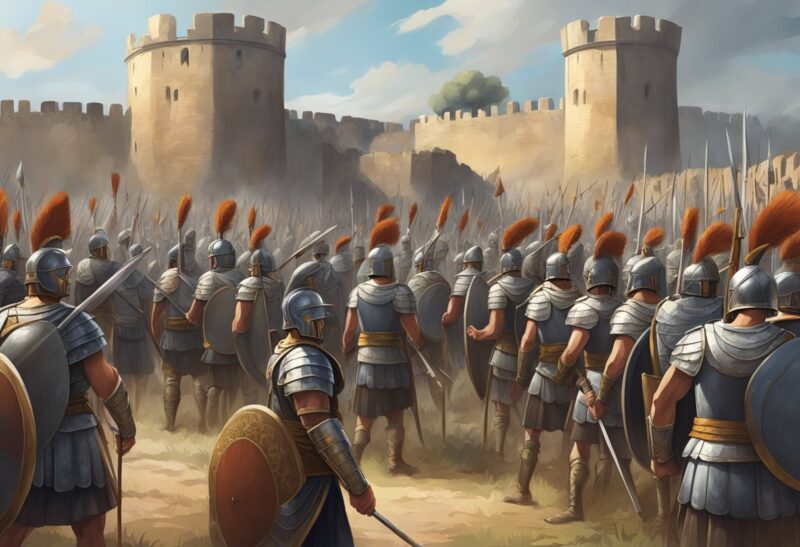
The Late Roman Army left a lasting mark on military traditions and played a key role in shaping the future of the Roman Empire. Its impact can be seen in both military practices and political developments.
Impact on Later Military Traditions
The Late Roman Army’s tactics and organization influenced military forces for centuries. Its use of heavy cavalry and mobile field armies became models for medieval armies. The army’s defensive strategy of fortified frontiers inspired later castle-building practices.
The army’s equipment also had a lasting impact. The Roman soldiers’ helmets and armor remained influential in medieval European warfare. Their siege engines and artillery served as templates for later siege warfare techniques.
Training methods developed by the Late Roman Army persisted in later military traditions. The emphasis on discipline, formation fighting, and siegecraft continued to shape European armies for hundreds of years after Rome’s fall.
The Army’s Role in the Succession of the Roman Empire
The Late Roman Army played a crucial part in imperial politics and succession. As the empire faced increasing threats, military leaders gained more political power. Successful generals often became emperors, like Constantine.
The army’s support became vital for any would-be emperor. This led to a series of soldier-emperors in the 3rd and 4th centuries. The military’s influence sometimes resulted in civil wars when different army factions backed rival claimants.
The army’s role in selecting emperors weakened central authority over time. This contributed to the fragmentation of the Western Roman Empire in the 5th century. In contrast, the Eastern Roman (Byzantine) army maintained a more stable imperial succession.
Frequently Asked Questions
The late Roman army underwent significant changes from Hadrian to Constantine. These transformations affected its composition, tactics, organization, and the duties of soldiers. Key reforms reshaped the military’s structure and strategy.
How did the composition of the late Roman army evolve from Hadrian to Constantine?
The army’s makeup shifted over time. Under Hadrian, it relied heavily on citizen legions. By Constantine’s era, barbarian recruits became more common.
Non-Roman auxiliaries took on greater importance. The cavalry arm expanded significantly during this period.
What tactical innovations characterized the Roman military strategy in the late Empire?
Late Roman tactics adapted to new threats. Mobile field armies became more important. These could respond quickly to invasions.
Fortified border defenses grew in prominence. Smaller units patrolled frontiers instead of large legions.
What was the standard size and structure of a late Roman legion?
Late Roman legions were smaller than earlier ones. They typically numbered 1,000 to 1,500 men instead of 5,000.
Legions divided into smaller, more flexible cohorts. This allowed for easier deployment and maneuver.
In what ways did Constantine’s reforms impact the Roman military?
Constantine made major changes to the army. He created a mobile field army separate from frontier forces.
He increased the use of heavy cavalry. Constantine also reformed military leadership and command structures.
How were the late Roman army units, such as legions and auxilia, organized?
Legions remained the core of the army. Auxilia units grew in importance and often matched legions in status.
The army organized into smaller, more specialized units. This included both infantry and cavalry formations.
What were the primary responsibilities and roles of a late Roman soldier?
Late Roman soldiers had diverse duties. They defended borders against external threats. Soldiers also maintained internal order.
Military engineering remained important. Troops built roads, fortifications, and other infrastructure. Some units specialized in siege warfare or naval operations.
References and literature
The Roman Army from Hadrian to Constantine (Michael Simkins)
The Roman Empire from Severus to Constantine
The Roman Army from Caesar to Constantine
The Roman Army, 31 BC-AD 337: A Sourcebook


